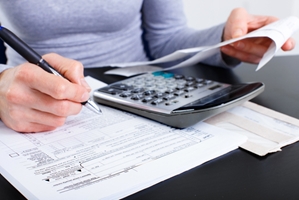
Tax season is fast approaching, and if you're the owner of a small business who is struggling to balance your debt with startup costs and other expenses, there could be good news for you. Read on to learn about the small-business tax offset, how to know if you're eligible, and how to claim it. (We've also covered strategies to minimise the money you owe before you even owe it.)
The Australian Tax Office is responsible for the federal taxation system and is the government's principal revenue collection body. It collects all taxes and also manages the Australian Business Register, the Higher Education Loan Program, and aspects of the superannuation system. The Australian Tax Office offers small-business tax offsets each year based on business income.
What is the small-business tax offset?
Essentially, it's designed to reduce the tax payable on your taxable income. Established by the Australian Tax Office to provide small businesses with tax offsets of up to $1,000 each year, this program bases the amount of money offset from taxes on the proportion of tax payable on your business income. In other words, your offset corresponds with the amount of money you make and the money you owe.
How do you become eligible?
In order to qualify for the small-business tax offset, you must first and foremost be a small-business owner. You may also qualify if you hold a share of net income from a small business, through a partnership or trust. Said business must not have made more than $5 million since 2016.
Do you need to apply?
If you are eligible for the small-business tax offset, you will qualify automatically. The Australian Tax Office calculates the offset when you file your taxes.
How is the offset calculated?
This offset is calculated by dividing the total net income of your business by your taxable income for the year. This is then multiplied by your basic income tax liability: 8% of this figure, up to $1,000, is your tax offset. There are also calculators available online through the Australian Tax Office to estimate your offset.
How can you claim it?
Once calculated by the Australian Tax Office, your tax offset will appear separately on your notice of assessment. You don't have to claim it; it is automatically factored in to pay off any of your outstanding debts. Any remaining money will be included in your tax return.
Other types of tax offsets
Others include the seniors and pensioners tax offset and the low income and low and middle-income tax offsets. You can also receive an offset for the total net medical expenses for disability aids, attendant care or aged care, and another for superannuation income.
Deductions and tax minimisation
You can claim a deduction for vehicle and travel expenses, clothing, laundry and dry-cleaning expenses, home office expenses, self-education expenses and the costs of tools, equipment and work necessities, among other things. For small businesses, the depreciation deduction can be a good option.
You can also receive tax breaks for donations to charitable organisations. It is important to ensure that the organisation you choose to contribute to is endorsed as a Deductible Gift Recipient if you hope to receive a break. It is also crucial that you do not receive any benefit from the donation; it must be a genuine gift to be counted.
Further information
For more information about specialised tax planning and tax minimisation strategies like these, visit WMC Accounting's website or call for a consultation. The experts at WMC Accounting are trained and experienced in tax law and will go above and beyond to ensure your small business prospers. WMC Accounting always priorities your business' overall commercial and personal objectives and works tirelessly to provide solutions that are tailored to meet your unique needs and circumstances.



